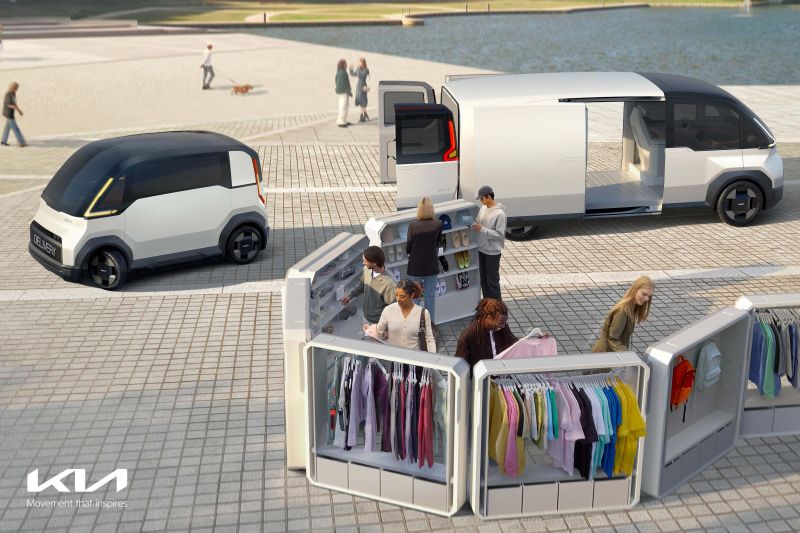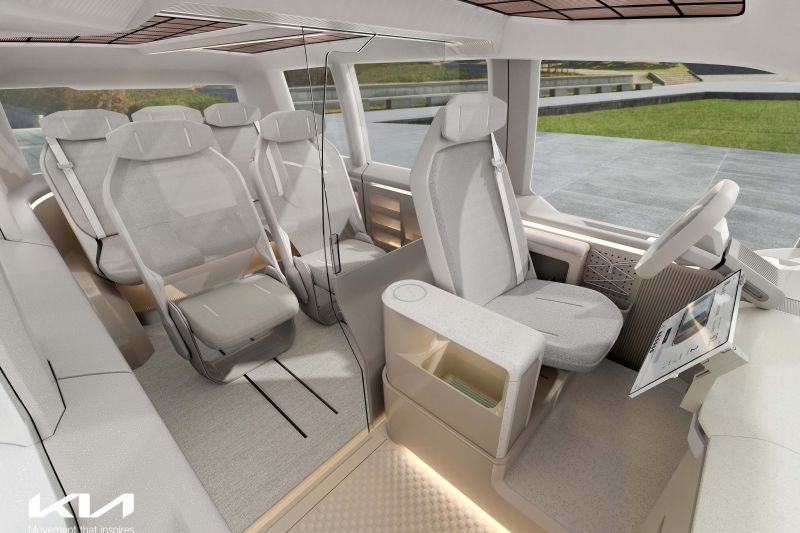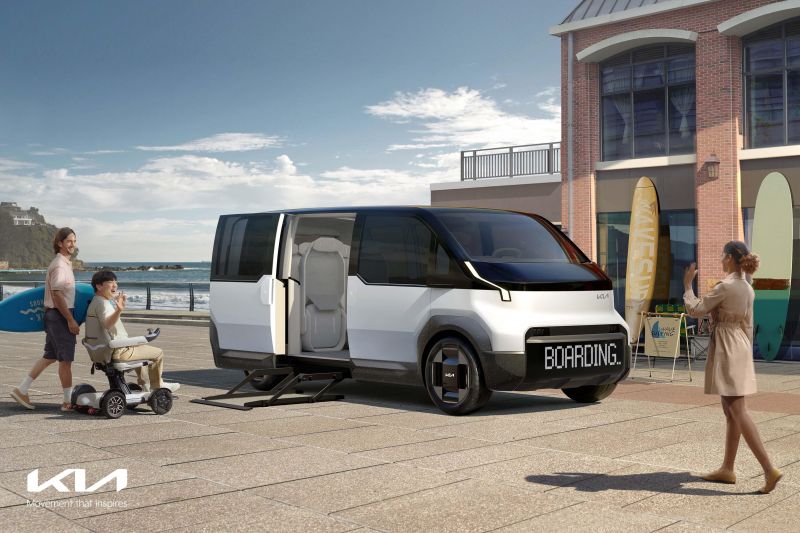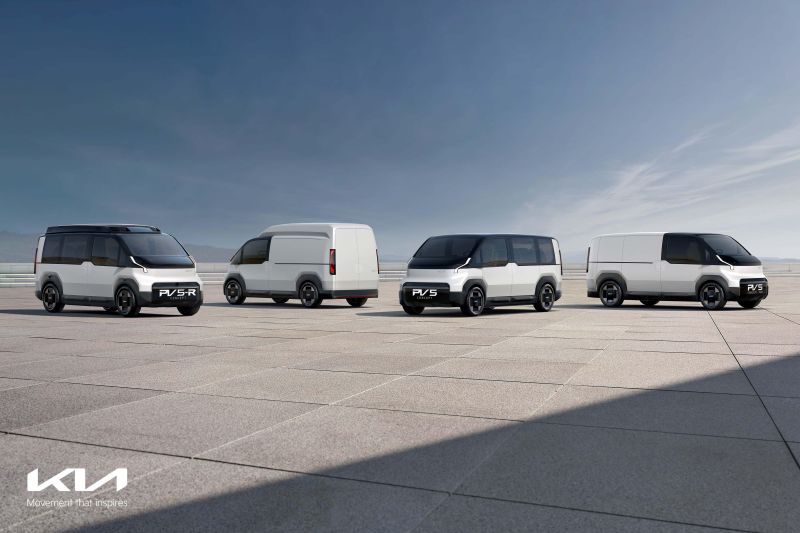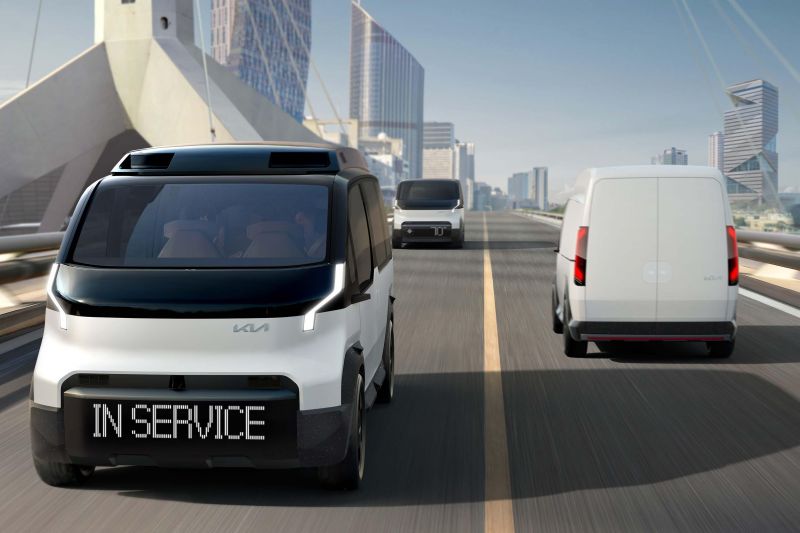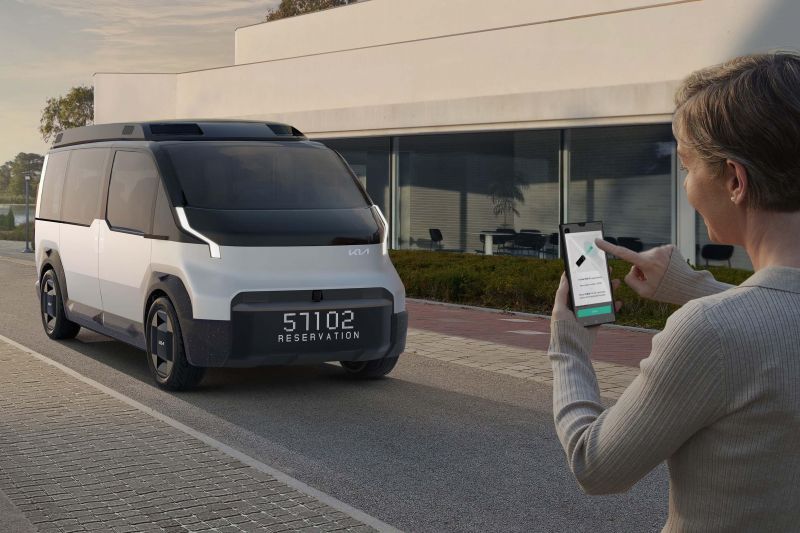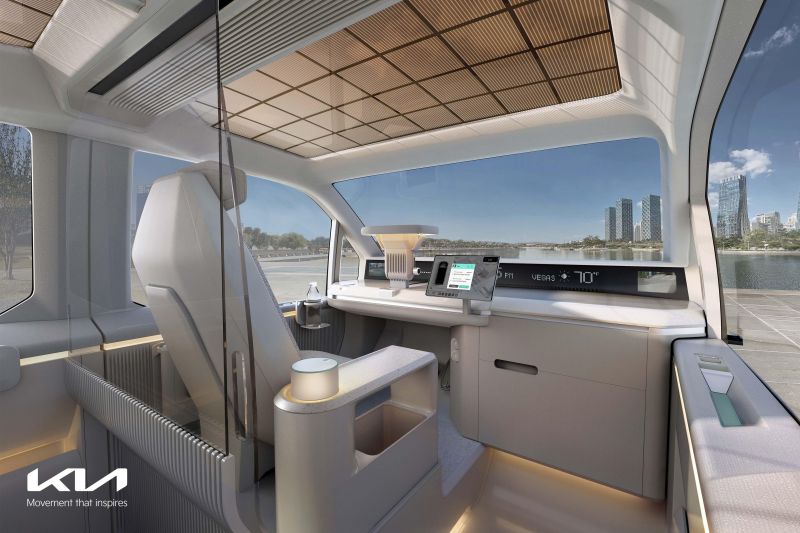Kia has revealed four concepts that preview the company’s future purpose-built vehicle range, with the first model to enter mass production in 2025.
The company is calling them Platform Beyond Vehicles (PBVs), and they’ll all be highly customisable for businesses. Kia will preview them at CES 2024 this week in Las Vegas.
Kia will break down its PBV rollout into three phases. The first two vehicles in this quartet, a people mover and a load carrier, will be badged PV5 and launch as part of this first phase.
These PV5 models will see the production line first in 2025 and will offer a choice of basic, high-roof and cab-chassis body styles, depending on the variant.
The PV1 and PV7 will follow afterwards. Kia has yet to detail the timing for these models but has confirmed they will be a part of its phase two rollout.
All the vehicles will operate fleet-based data software which will allow businesses to manage their respective fleets using sales, inventory and delivery data. Kia also says the vehicles’ AI software will be able to adapt to the driver’s preferences and routines to create a more personal and efficient experience.
The PBV line-up will offer Vehicle-to-Everything technology (V2X) which allows drivers to power mobile phones and emergency equipment while out on route.
Kia has designed the vehicles to be highly adaptable to multiple uses during their lifetime. For example, the PV5 can convert from a passenger ride share or people mover to a commercial cargo van with the use of “life modules”.
These will allow parts to be moved around and removed if necessary using hybrid electromagnetic and mechanical coupling technology.
Kia has designed and built the concepts to feature a “dynamic hybrid” body structure which it says will see a reduction of 55 parts during production, and yet the company says this won’t affect the rigidity of the vehicles.
Alongside the reduction of parts, Kia claims the PBVs will feature extensive use of materials such as bio plastic, Post Consumer Material (PCM) plastic, bio paint, recycled PET fabric, felt and yarns, and bio-PU foam.
Kia says the first phase of its rollout will see the introduction of the PV5, which is targeted primarily at rideshare, delivery operations and utility businesses.
The vehicles will be built in a dedicated plant in Autoland Hwaseong, South Korea.
The factory will be operational in 2025 and has a maximum production capacity of 150,000 units annually.
The PV5’s design offers large sliding side doors and rear barn doors which Kia says will allow for easy loading and unloading of cargo or people. The electric vehicle platform provides a flat cargo area and extended wheelbase for maximum cargo capacity.
Up front, the driver receives a dashboard that offers a “desk-like surface” if the driver folds down the steering wheel. Once folded down Kia says the steering wheel will act like a desk lamp creating an “office-like environment”.
Kia will launch the remaining two models during the second phase of its rollout.
The PV1 will be the smallest model in the line-up and be primarily used for short-distance logistics transportation. In the photos supplied by Kia, it appears the front wheels will be able to rotate almost 90 degrees for a tighter turning circle and greater manoeuvrability.
The PV7 will be the largest vehicle within the line-up and boast the most cargo space and largest batteries, while offering enhanced functionalities which Kia has yet to detail.
Kia says that as part of phase two, its PBVs will evolve into “AI-based mobility platforms” that will collect data based on the vehicle’s interactions and use it to interact with the driver and ensure the vehicle’s systems are kept up to date.
The company also claims the software will eventually be able to interact with robotics in the future. This application can be used, for example, for restocking the vehicle at a warehouse.
Kia will also introduce a ‘modularity system’, where PBVs will feature rails on the ceiling, floor and side panels to allow for easier loading and unloading of cargo.
The Korean carmaker will introduce self-driving capabilities as part of a third phase in its PBV rollout.
The brand, working with Motional (a joint venture between HMG and Aptiv), will create a PV5 Robotaxi.
It will develop software using Motional’s advanced Level 4 autonomous driving technology.
Kia has already established partnerships with companies like Uber, Coupang, CJ Logistics, Kakao Mobility, and Dubai Taxi Corporation to further enhance its PBV-dedicated business system.


